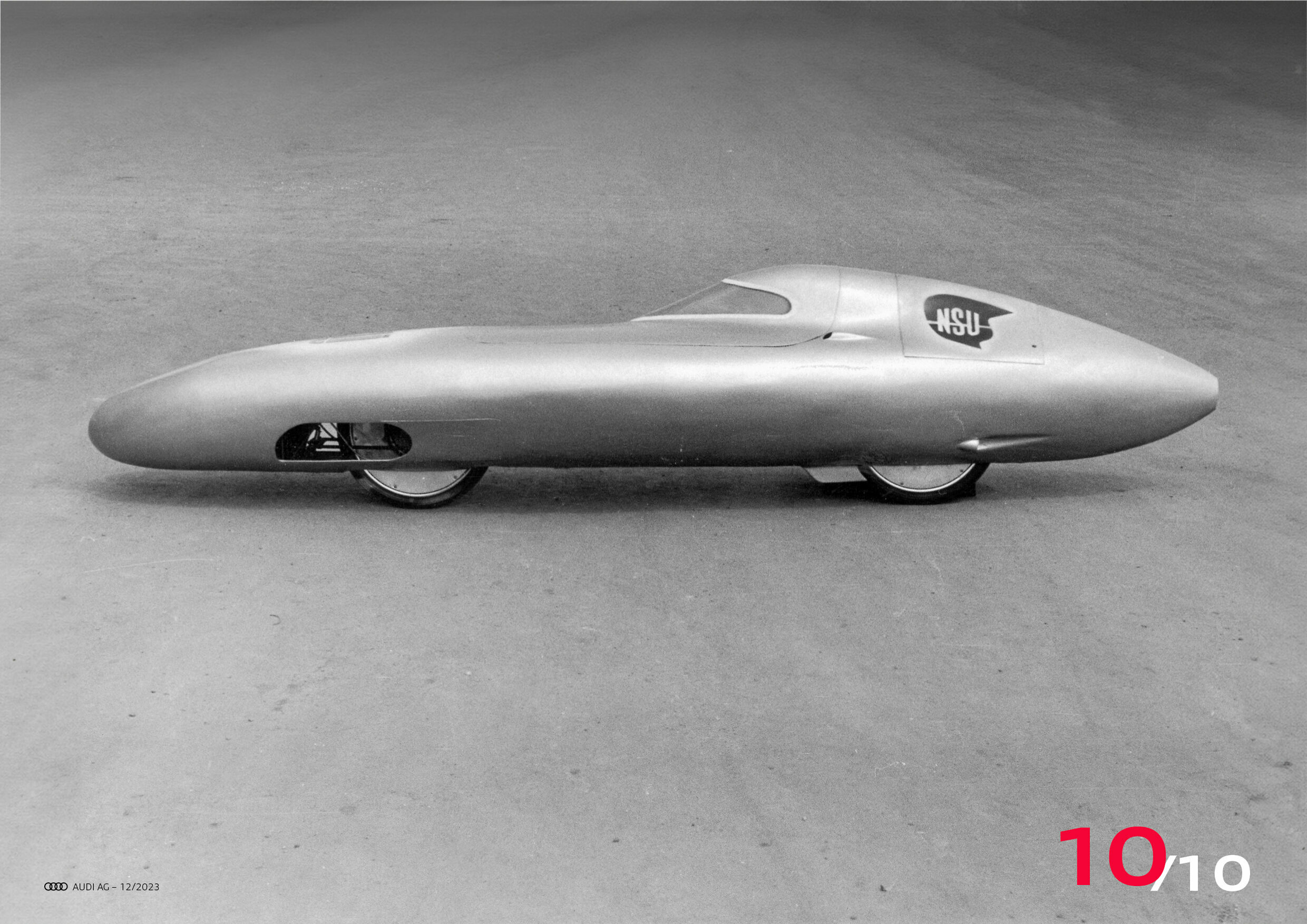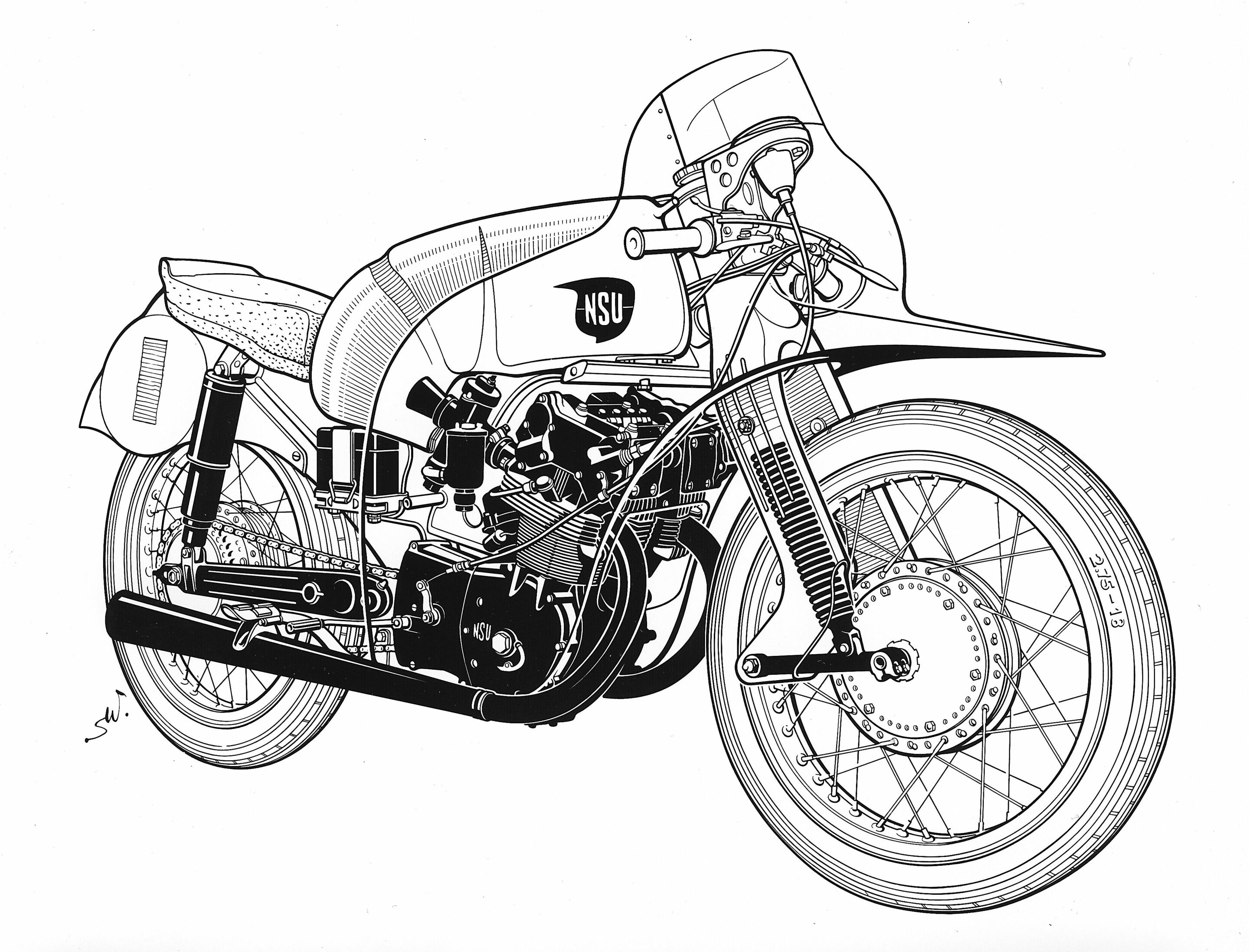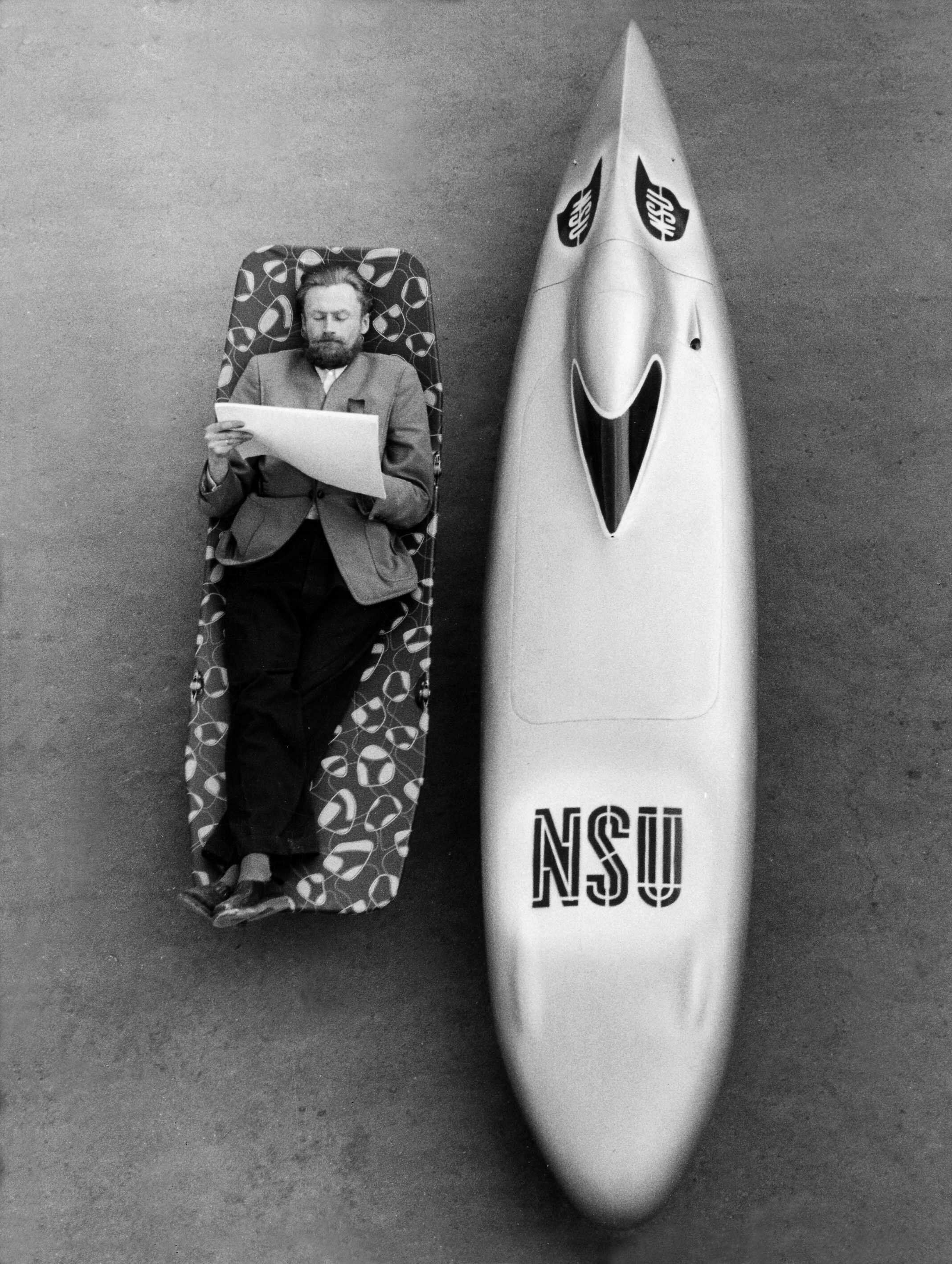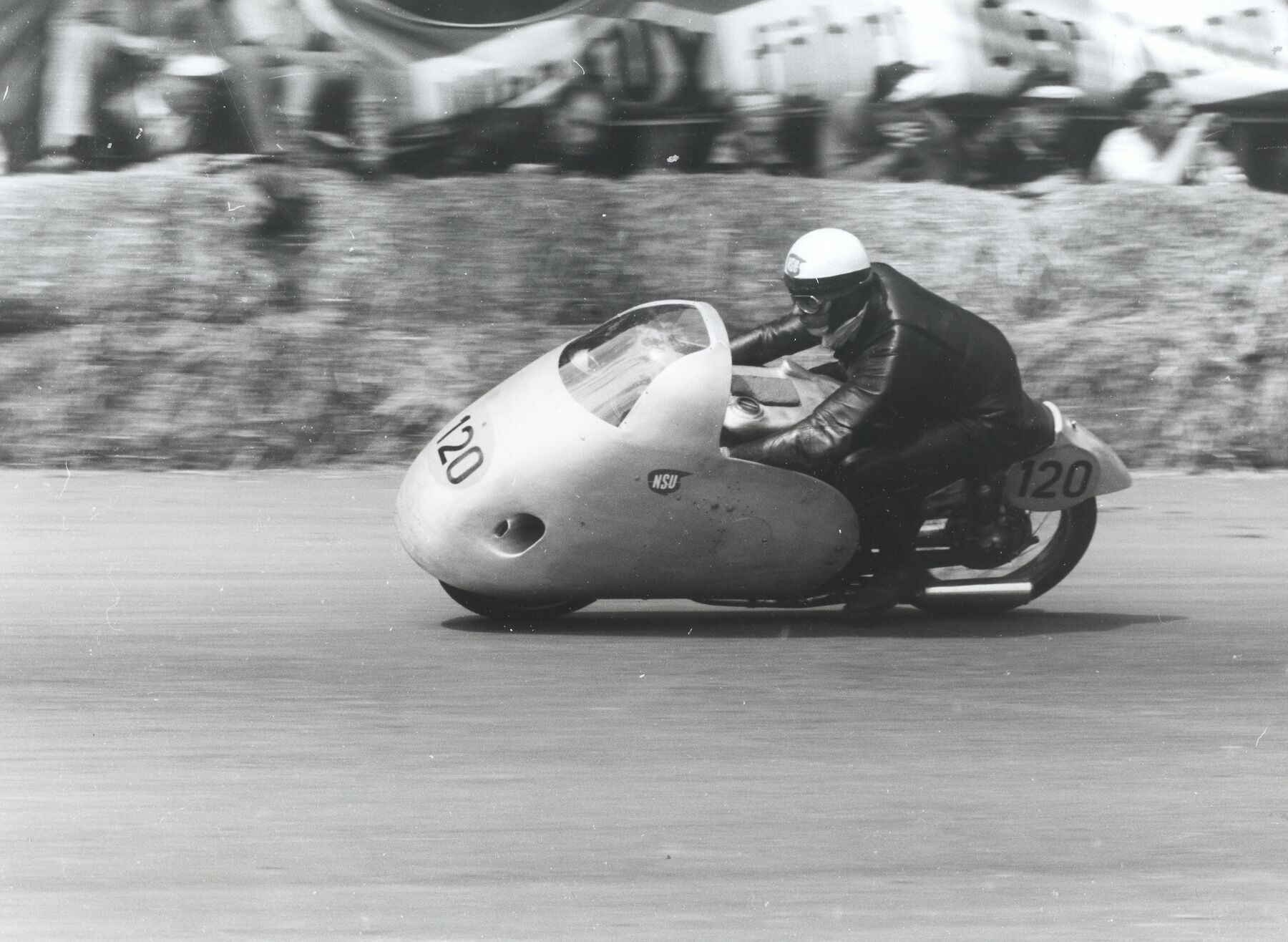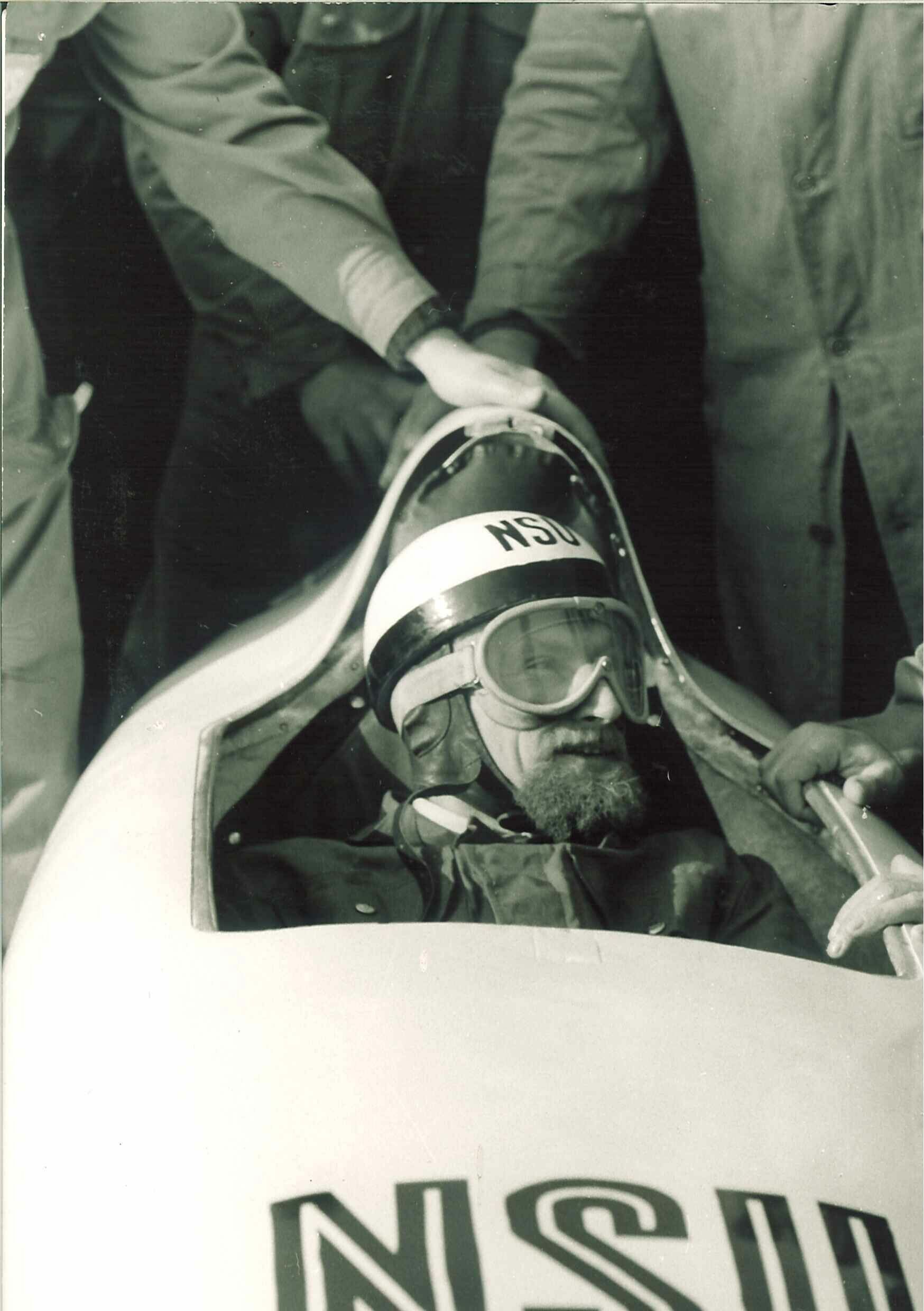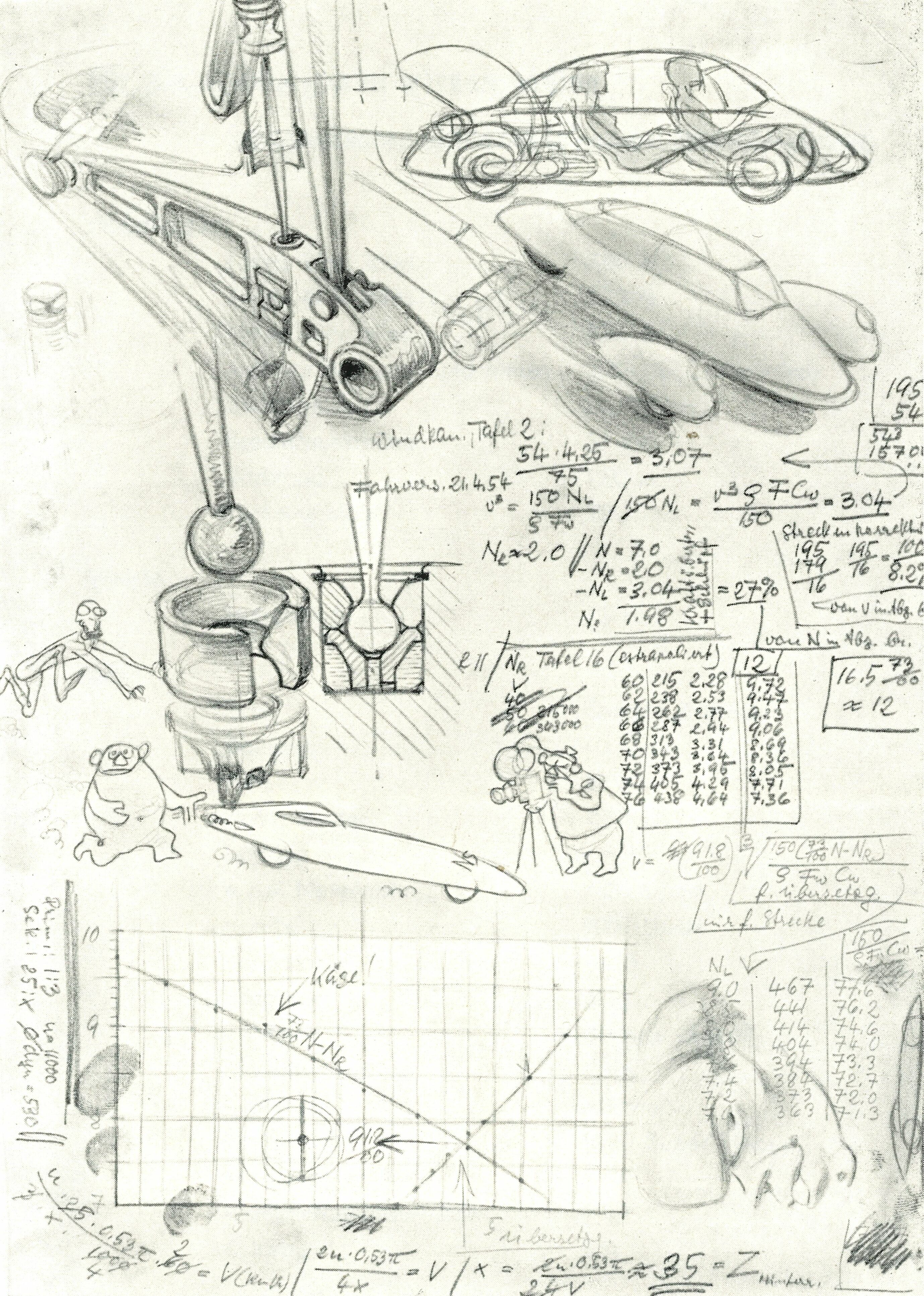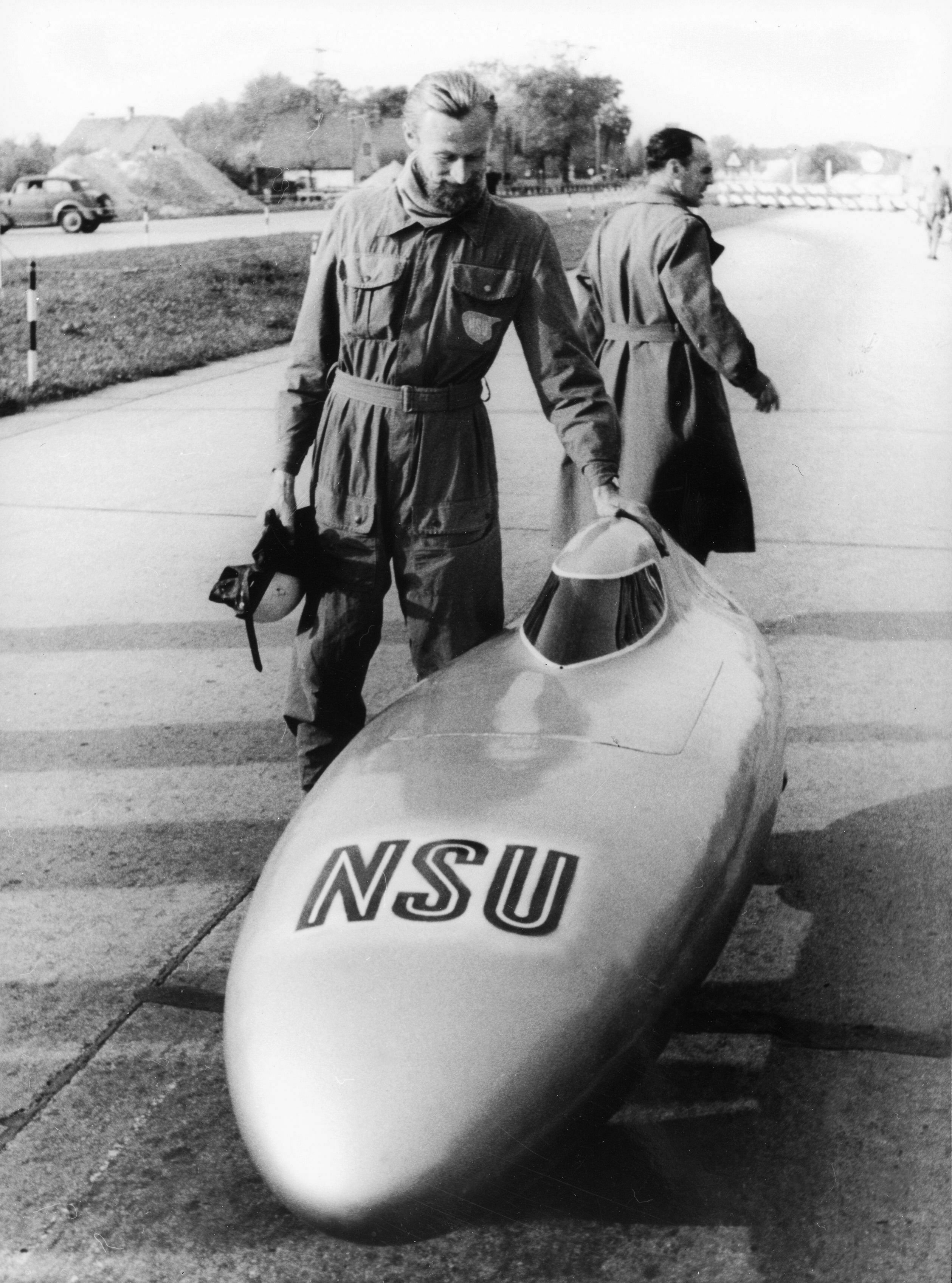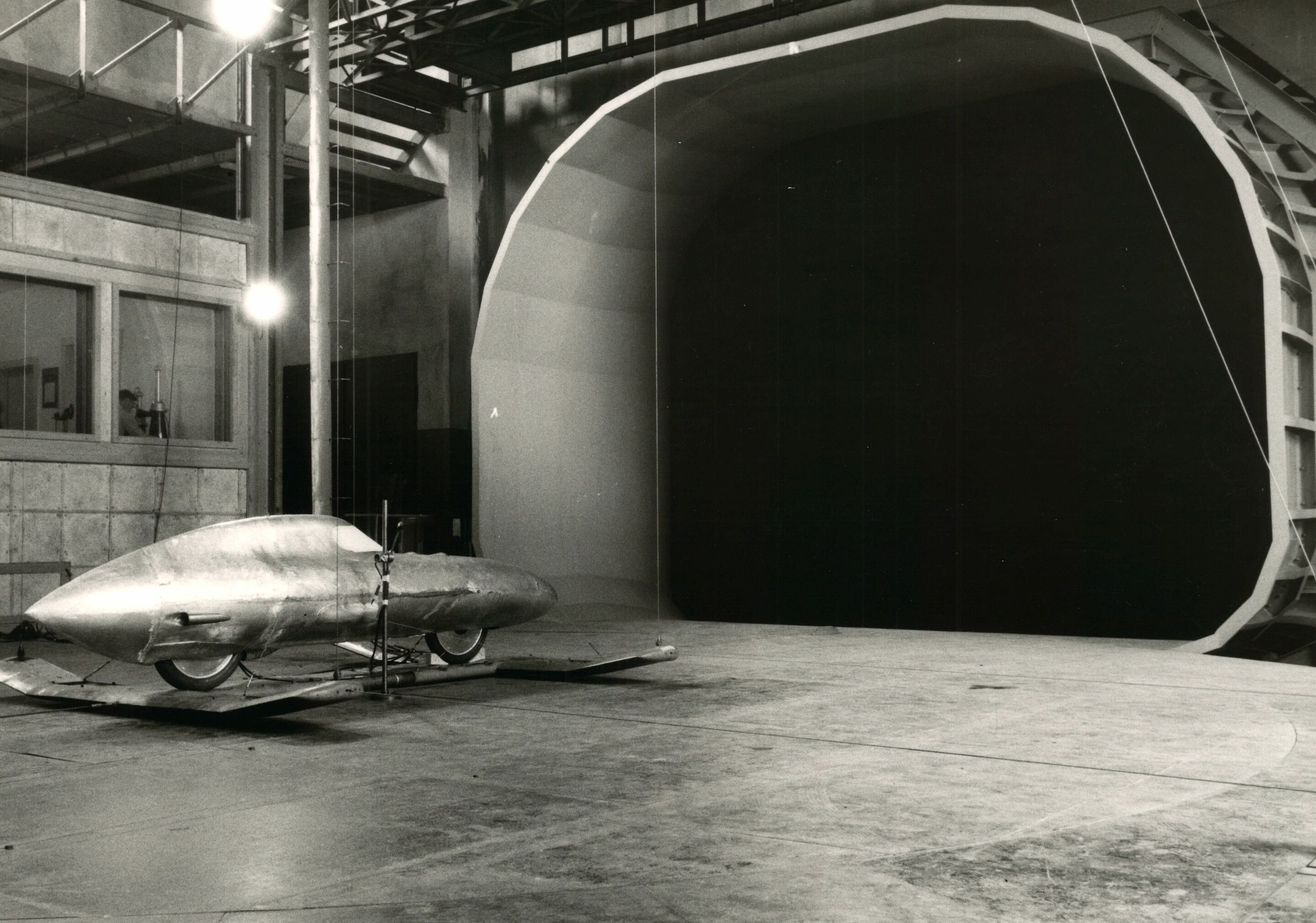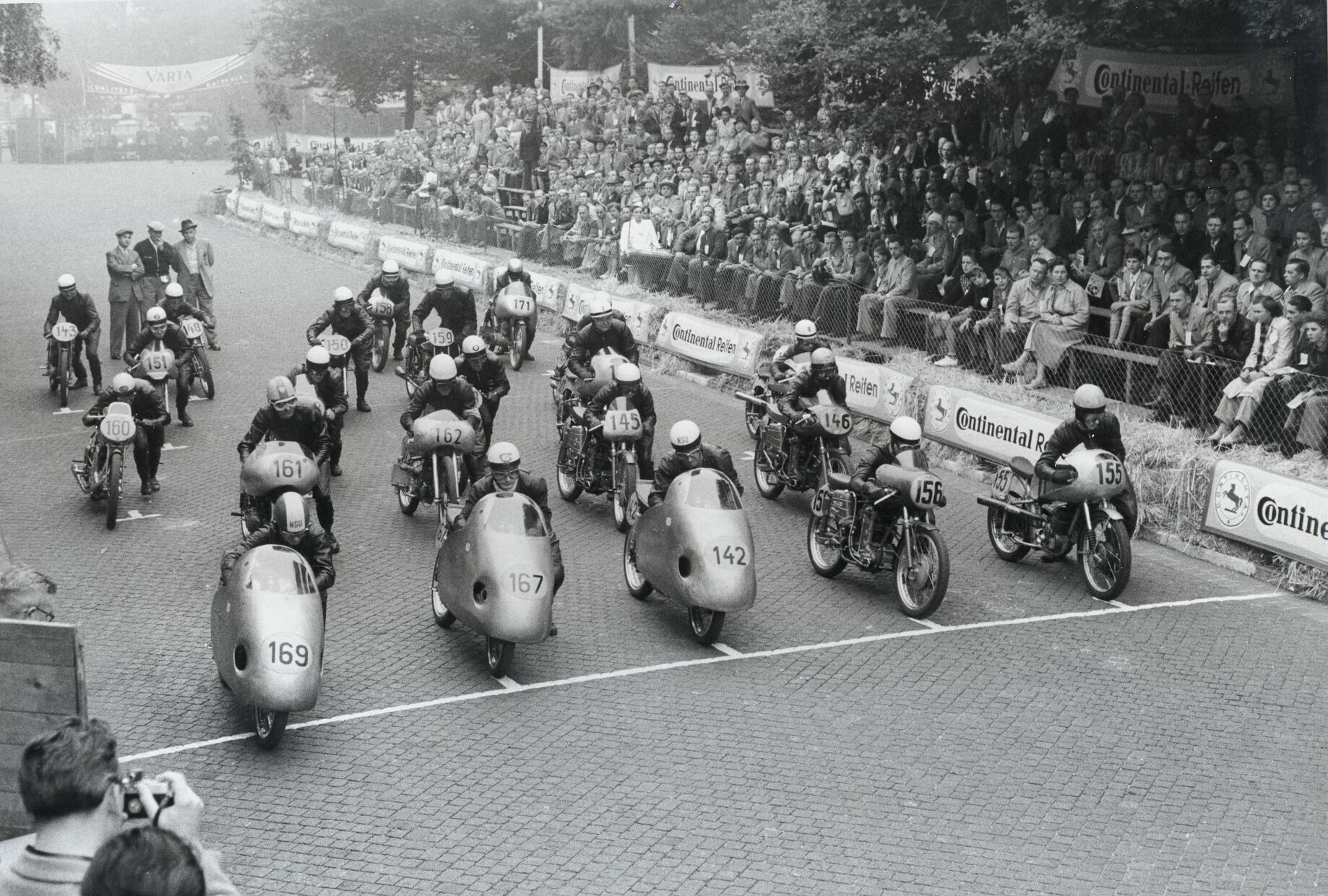Record-breaking aerodynamics in ‘flying lawn chairs’, Blue Whales, and Dolphins from NSU
- Highly aerodynamic motorcycles break records for NSU
- 150 years of the heritage brand: classics and one-of-a-kinds from NSU’s long history – the finale of the ten-part series
The NSU Rennfox Dolphin, and Rennmax Blue Whale: streamlined motorcycle models which scooped many prestigious victories in the 1950s. The Neckarsulm-based company, NSU, applied its early wind tunnel research into aerodynamics on the race track and in record-setting runs. In the final episode on the history of NSU to mark the brand’s 150th anniversary, Audi Tradition presents some of the heritage brand’s unique vehicles.
Aerodynamics at NSU: In the late 1960s, the NSU Ro 80, made a name for itself with its futuristic, streamlined shape, and wedge-shaped body enabling a drag coefficient of 0.35 cW. The Ro 80 set a new benchmark for production cars, and was voted ‘Car of the Year’ in 1967, not least because of its design and innovative Wankel engine. But two decades earlier, NSU’s motorcycles already featured highly streamlined designs, achieving noteworthy victories on international race tracks and setting numerous world records.
1951: Eight new world speed records for NSU bikes
One driving force behind the record-breaking ambitions that were hatched in Neckarsulm, was Wilhelm Herz; an experienced motorcycle racing rider who had already worked for NSU for a number of years and celebrated many successes with the brand. In 1948, he finally persuaded NSU’s chief engineers to support his plans to set a record with a design by aerodynamics pioneer, Reinhard Freiherr von Koenig-Fachsenfeld. Due to its unique shape and unusual length, Fachsenfeld’s vehicle was nicknamed the ‘record cigar’ at NSU. Its promising design was tested extensively, but the company stalled the record-breaking plans when Herz was involved in an accident. Since no other NSU racer wanted to ride the record cigar, Dr. Walter Froede, then head of NSU’s development department, stopped the project. But the plans were not completely shelved; for now the company’s multi-track approach and other aerodynamic concepts paid off in other areas – in April 1951, NSU bikes participated in speed record runs on the Munich–Ingolstadt autobahn. Herz rode a 500cc NSU supercharged bike with a unique fairing whose distinctive pointy snout is clearly reminiscent of the sea creature that inspired the aerodynamics engineers originally. Herz rode the Dolphin I to a top speed of 290 km/h (180 mph) for a world record! The year 1951 proved impressive for NSU, with the brand setting eight new world speed records.
It was that same year that graphic designer Gustav Adolf Baumm contacted the company. Baumm introduced his own record-setting vehicle project, which went far beyond Fachsenfeld’s concept, and had the rider lying on his back, allowing for a body height of just 75 centimeters. Using a repurposed ironing board, Baumm convinced head of development Froede of the controllability of his design and received financial and technical support from NSU. After successfully presenting his first motorcycle, sometimes called the ‘Baumm deckchair’ or ‘flying lawn chair’, in 1952, NSU awarded Baumm a contract, and he developed the Baumm I and Baumm II, which achieved excellent drag coefficients, with NSU’s research department. The ‘lawn chairs’, failed to fulfill many of the most common requirements, lacking in comfort and wholly unsuited for relaxing in the yard as they were. But they did break records, which is why they were called ‘flying lawn chairs’. In 1954, Baumm broke eleven world records in the 50 to 175cc classes, both as a designer and rider.
While the Baumm ‘flying lawn chair’ was primarly designed for setting speed records, NSU used other streamlined concepts in racing. In 1954, the company won every race it entered, with the NSU Rennmax Dolphin, in the 250cc class, achieving double, triple, and even quadruple victories. The same year, at the Solitude race near Stuttgart, the full fairing known as the Blue Whale was used for the first time. Compared to the Rennmax with the Dolphin fairing, the Blue Whale fairing made for even higher speeds. In the very first race, riders Werner Haas and Rupert Hollaus took first and second place, respectively. In 1954, Haas won the World Championship and the German Championship in the 250cc class on a Blue Whale. In the 350cc class, Hermann Paul Müller earned NSU the title of German champion on a modified Rennmax Blue Whale with 288cc of displacement.
Herz sets world speed record of 339 km/h (211 mph) on a Dolphin III
In the summer of 1956, NSU doubled down on its record-setting streak. The famous Bonneville Salt Flats were the ideal stage; one of Utah's most iconic natural landmarks, the dried-up salt lake is the perfect place for speed runs. A track which spanned 22 meters wide (24 yd) was created for the record-setting runs. H. P. Müller set several speed records on a Baumm II and reached a speed of242 km/h (150 mph) on a 125cc NSU Rennfox. That same year, Wilhelm Herz rode a Baumm IV and Dolphin III. The fully faired Dolphin III, with its distinctive tail fin, had a special mission; Herz wanted to ride it faster than anyone had ever ridden a motorcycle before and despite the less than ideal conditions, and a number of adversities that required in-the-field changes to be made to the Dolphin III, Herz set out to break the record on August 4. Gerd Stieler von Heydekampf, NSU’s General Manager, and Technical Director Viktor Frankenberger had accompanied the team, and a radio station was reporting on the ground from Utah. The effort paid off – Herz reached a top speed of 339 km/h (211 mph) on the bike, setting a new world record and impressively demonstrating Neckarsulm’s expertise in motorcycle construction and aerodynamics.
‘Windschnittig’: New aerodynamics exhibition at the Audi museum mobile
Top speed performance (and top fuel consumption) are only two aspects of the complex subject of aerodynamics. In its current exhibition titled ‘Windschnittig’ (German for ‘streamlined’), Audi Tradition invites everyone interested in technology on a journey through the history of aerodynamics. The new special exhibition at the Audi museum mobile in Ingolstadt, which will be on display until June 9, 2024, presents the basic aerodynamic concepts of the period up to 1945, and introduces the pioneers of aerodynamics research. Edmund Rumpler, Paul Jaray, and the aforementioned Reinhard Freiherr von Koenig-Fachsenfeld are names that no student of aerodynamics can ignore. In the early 20th century, these three engineers began to adapt the body shapes of automobiles to match the flow of air. Visitors to the ‘Windschnittig’ exhibition can look forward to more than a dozen large exhibits, including vehicles that are as rare as they are unique. The second part of the exhibition bears the title ‘Form vollendet’ (German for ‘perfect form’). It tells the story of aerodynamics after the Second World War and is currently on display at the August Horch Museum in Zwickau. It is coming to the Audi museum mobile in July 2024.
Each month during NSU’s 150th anniversary year, Audi Tradition has presented a different NSU model, including brand classics on two and four wheels, prototypes, and one-off models. If you want to delve deeper into the complex product history of NSU, we recommend the Audi Tradition Edition book: ‘NSU-Automobile. Typen – Technik – Modelle’, written by Klaus Arth and published by Delius Klasing Verlag. All episodes of this anniversary series are available to read in the Audi MediaCenter.
